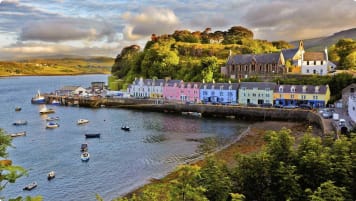Lighthouse Keepers of Scotland
An Antipodean travel company serving World Travellers since 1983 with small group educational tours for senior couples and mature solo travellers. Articles about Scotland, its cities such as Glasgow and Edinburgh, the islands and its Prehistoric heritage including standing stones and viking heritage are all published to support your knowledge before you travel with Odyssey.
22 Feb 22 · 10 mins read
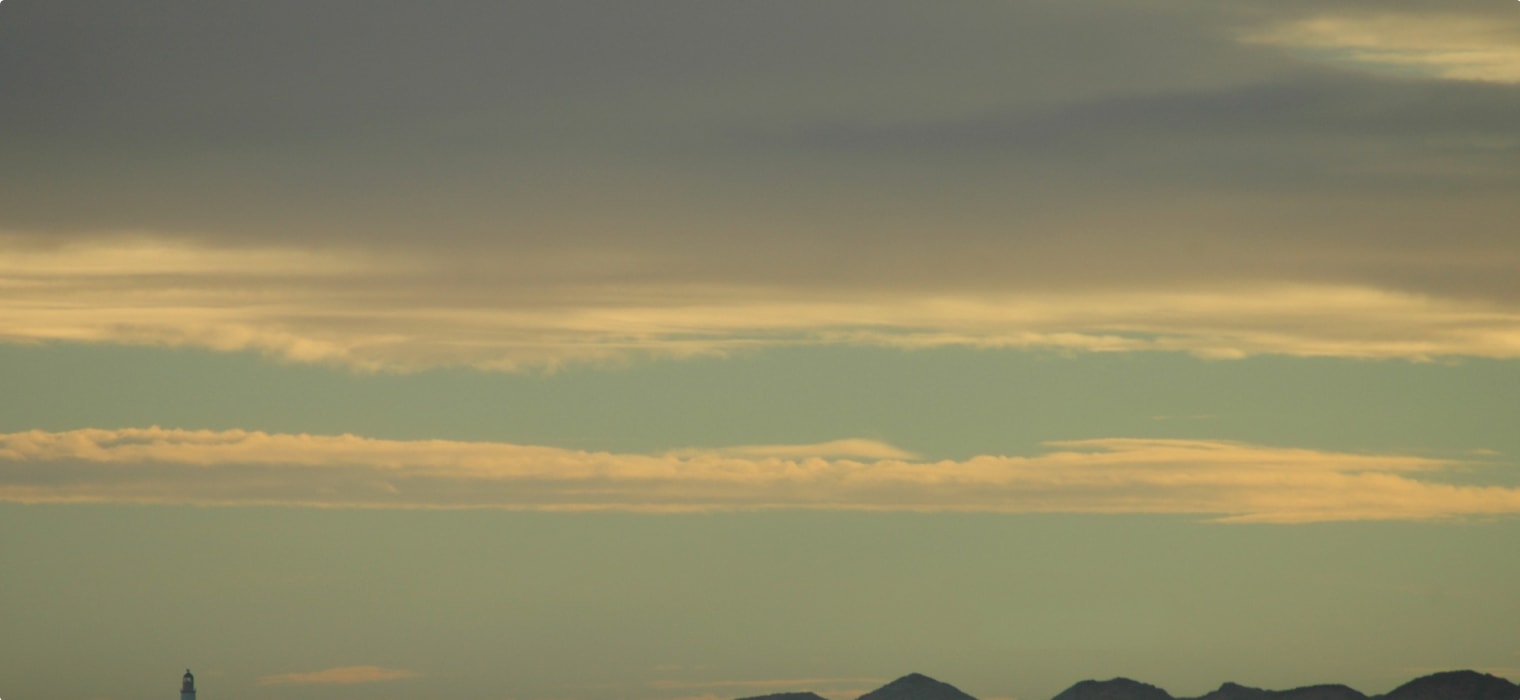
The Lives of Scotland’s Lighthouse Keepers
By Marco Stojanovik
For generations Scottish lighthouses have lighted the dark and dangerous seas along the spectacular coasts of the country. These days they are all automated, but for over 200 years they were manned by ever-watchful keepers presiding over the treacherous waters below.
In its heyday during the 1890s, the Northern Lighthouse Board (NLB) employed over 600 keepers in the 80 or so lighthouses speckled around the coast and kept a waiting list of over 200 hopeful applicants. The job was a peculiar one, with various duties requiring resourcefulness and the ability to cope in isolated and often cramped conditions for long periods of time. But it also certainly had its advantages: a certain income, a free furnished house with all repairs and taxed paid, coal, candle, clothing, and land for a couple of cows or an equivalent in money.
So, what was required to become a keeper of a Scottish lighthouse? What exactly were their myriad duties? And how difficult was the job? Read on to find out in our detailed article on what life was like for Scotland’s lighthouse keepers. Much of the information is sourced from Bella Bathurst’s book The Lighthouse Stevensons, as well as other sources linked to throughout. It has been written as background reading for Odyssey Travellers Scotland’s West Coast small group tour, during which we visit several of Scotland’s lighthouses.

Requirements for the Job
The necessary qualities for a lighthouse keeper were not the sort easily listed on a job description. A love of details, an affection for the endless repetition of small tasks, a long-learned understanding of water, wind and tide, and a habit of mind able to cope with dull days and ferocious nights were all required.
Where possible, the NLB tried to recruit those with some maritime experience – ex-naval and merchant seamen or retired fishermen. In part, their previous jobs reduced the need for training, but the military discipline of most sailors’ lives was also an asset. Candidates with working knowledge of mechanics and who had regular habits also had an advantage, but the most favoured were those with the necessary emotional qualifications of self-discipline and patience.
Robert Stevenson, engineer to the NLB and founder of the Stevenson family dynasty of lighthouse engineers, set the standard for the keepers in the early 1800s that would be followed over the next 200 years. He introduced the military habit of mind that characterised the service and a set of habits and rituals that persisted well into the 20th century.
One of the practices he introduced was to spring surprise visits on the keepers. This caught out several of the keepers, either still asleep, or with undusted lanterns and unwashed crockery. “When he did find something amiss,” writes Bella Bathurst, “Robert was a ruthless judge, with a bloodhound’s nose for trouble or dust.”
All the keepers were also expected to maintain a virtuous private life. As a profession, they were instructed to be “sober and industrious, cleanly in their persons and linens, and orderly in their families”. No matter how dutiful an applicant may have appeared, they would not be hired if there was a risk of them being drunk, lazy, or dishonest while on duty.
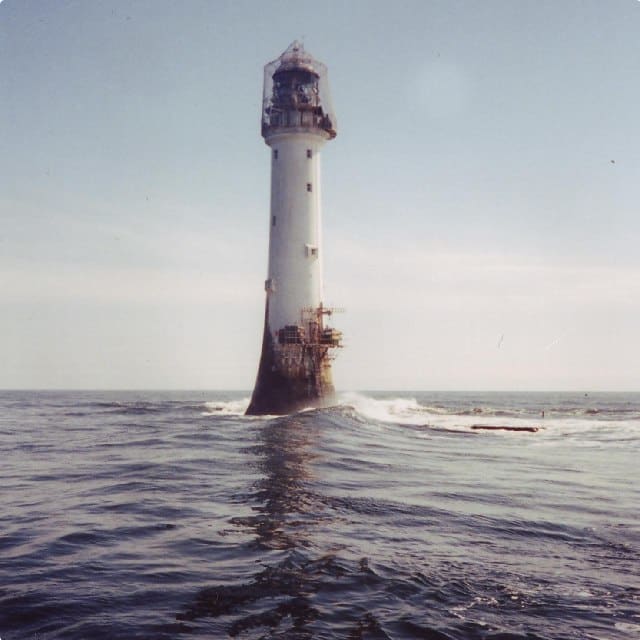
A Lighthouse Keeper’s Duties
Most lighthouses employed three keepers at any given time, rotating four hour shifts on a 24-hour watch system. Duties were varied, with keepers expected to be a jack of all trades.
In the daytime, they were occupied with maintenance, rapids, cleaning, and oil changes, amongst other duties. They were also responsible for the painting of the stations, including on the outside to ensure it remained highly visible at all times. During the evening, most duties were in the light room, such as making the sure the mechanism stayed at the correct speed, so the light flashed in the right sequence. All the while, the keepers had to monitor for changing weather and be ready to start up the foghorn if visibility became less than four miles.
Although the duties were not necessarily onerous, they were specific. The keeper at Port Patrick lighthouse, for example, was given instructions in 1802 to trim the wicks of each oil lamp down to precisely three-sixteenths of an inch; clean the reflectors with linen or cotton rags and then use a brush to clean the throat of the reflectors; and clean the windows on the inside with linen or cotton rags, and on the outside to clear the glass of dimness with fresh water and a mop.

Perhaps surprisingly, the duty to save lives was never specifically part of their jobs. The lighthouses and their keepers were there as warnings. Although the existence of the lights did passively save lives, there was no requirement for the keepers to actively rescue those in danger. In fact, they were actively discouraged from helping victims of shipwreck, since to do so would have meant leaving the light and therefore neglecting their duties. The only direction they were given was merely to ‘take notice of’ any shipwreck in the vicinity of their light and to maintain the Wreck Book.
In practice, however, the keepers did not just stand idly by. Adapting their role to the local realities, many would dispense weather reports to fishermen, warn sailors of dangers, and assist ships that foundered. On several occasions, they also performed courageous individual acts. The Pentland Skerries keepers rescued twelve of the crew of the Vicksburgh in 1884, for example. And in another example, Robert Macauley, keeper at Fair Isle North, conducted a stormy journey to help the keepers at the South light after a bombing raid in 1941.
Bathurst writes: “Whether saving tourists and trippers who had got into trouble, extinguishing the fires that occasionally broke out in the light-rooms or giving shelter to the victims of shipwreck, the keepers did not have a history of passivity.”
Family Life
The majority of mainland lighthouses allowed for families. Here there would be neatly divided cottages for the principal keeper and the two assistants and ground for gazing a cow or sheep. The NLB never appointed female keepers, believing that one woman bundled up with two men for extended periods of time was asking for trouble. Often, the keepers’ wives, however, helped out with duties such as cleaning, housekeeping, and maintaining the records when necessary.
The rock station lighthouses – those built on rock in the middle of the sea – were no place to raise a family though. These were too remote and small to allow for more than the keepers themselves. Instead, the wives would remain on the shore nearby, with the husbands leaving them behind for weeks at a time out on the isolated platforms.
In many cases, the wives had quite a lonely existence. Their lives were similar in many respects to a fisherman’s. They endured the same long waiting, the fright at storms and gales, the solitary motherhood, the stranger come home every few months to greet the bewildered children. Bathurst writes, “If you married a keeper, you married the job, as several keepers’ wives point out even now.”
Difficulties & Providing for the Keepers
Lighthouse keepers faced several difficulties on the job. In addition to the meticulous nature of their duties, they also had to deal with the problems of living in isolation and frequently endure violent storms and freak waves.
The difficulties of loneliness, however, is a myth, as no lighthouse ever had fewer than three attendants. Rather than adjusting to solitude, the real problem was living isolated for a long time in a small room with a stranger. Arguments frequently arose, usually as a consequence of boredom, since much of the keepers’ existence was spent cramped up with a colleague idly waiting for the next watch. Locked up together, many keepers developed mortal grudges against each other.
They also had to contend with unexpected difficulties. Bathurst writes, for example, “Dazzled birds came crashing through the lantern panes, keepers’ wives needed maternity care, assistants sabotaged the principals’ cows, the pigeon post got blown off course or taken by hawks.”
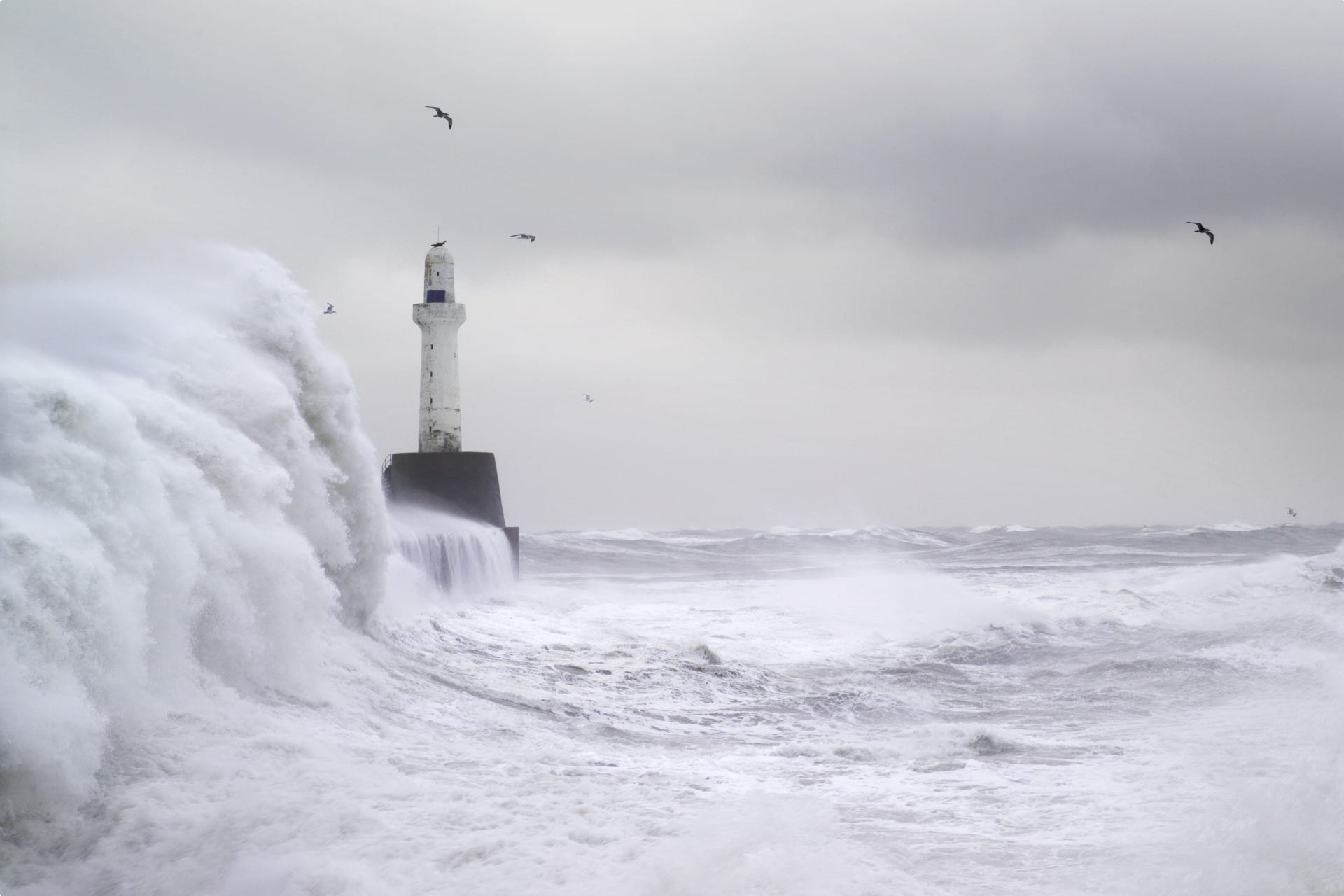
To ease the difficulties and maintain discipline, the Commissioners of the NLB went to great lengths to ensure that every aspect of the keepers’ lives was provided for. Reading matter, for example, including copies of useful instruction books and approved fiction, was provided for each lighthouse.
Wives were encouraged to study Francatelli’s Cookery for the Working Classes, How to Manage a Baby, and Miss Nightingale on Nursing. Keepers with young children were to have the first and second Books of Reading, the Rudiments of Knowledge, the Moral Class Book, and the Introduction to the Sciences and the Geographical Primer.
Copies of the Weekly Scotsman and the Illustrated London News were also sent to each lighthouse. However, given the stormy weather and the unreliability of relief boats, they were usually well out of date by the time they arrived.
The Commissioners also appointed a missionary to visit the more remote lights. This was to ensure that the keepers had not taken up any barbarous practices and to provide some form of outside teaching
Food was also well covered. By 1873, each keeper was allowed a daily ration of a pound of butcher’s meat, a pound of bread, two ounces of oatmeal, barley, and butter, a quart of beer and as many fresh vegetables as could be grown at the lighthouse. The vegetable gardens were so jealously guarded that keepers were allowed to take any movable crops with them when they transferred to a new lighthouse, or to sell them on to the new keeper.
All lighthouses were also supplied with a medicine chest for basic first aid. Plus, there was a separate supply in case of a cholera outbreak containing a supply of opium pills, castor oil, spermaceti ointment, and Durham mustard for use as a poultice. All lighthouses were also issued with a copy of the Medical Directions for the Use of Lightkeepers, which covered everything from correct use of leeches to the treatment of scurvy, poisoning, worms, smallpox, and fainting.
Mysterious Disappearance on Flannan Isle
The unhappiest point in the keepers’ history occurred in 1900 at Eilean Mor, one of the remote cluster of rocks known as the Flannan Isles located in the Outer Hebrides of Scotland When Captain James Harvey of the lighthouse ship the Hesperus arrived at the Flannan Isles lighthouse on Boxing Day as part of a regular rotation of keepers, he received no sign from the on-duty keepers.
Captain Harvey landed the relief keeper Joseph Moore, who went up to the Flannan lighthouse to find the keepers – James Ducat, Thomas Marshall, and William MacArthur. But there was no sign of life. The men had disappeared, leaving only a scattering of puzzling clues: a stopped clock, a knocked over chair, crumpled beds, and a table set for a meal that had never been eaten.
On their return the next day, the same small group searched the island from end to end, still finding no sign of life. The logbooks had been maintained until a week previously, noting several days’ worth of unexceptionable weather. Plates and cutlery in the kitchen had all been cleaned and left to dry, and the keepers’ oilskins and seaboots were missing from the passageway.
The only evidence of anything amiss was near the landing platform on the west side of the island. Here there was extensive damage from a recent storm, with evidence that waves had reached over 100 feet above sea level.
By the cliff edge, where equipment for landing supplies would usually be stored, the party discovered several of the ropes and a box containing landing tackle missing and the iron railings guarding the footpath bent out of shape or wrenched from their foundations. A block of stone weighing at least a ton had somehow fallen several feet from the top of the cliff to the landing stage and a lifebuoy stored 110 feet above sea level had disappeared completely.
No one is absolutely certain about what happened to the Flannan Isle keepers. The incident did spark national speculation and several scandalous rumours though. It was suggested that one of the keepers was an alcoholic who had pushed the other two over the cliff edge while drunk, that the three were involved in a soured love-affair that resulted in a murder-suicide, and even that one of the keepers had dragged his colleagues into the sea in a fit of religious fever.
Later speculations got even more fanciful. It was rumoured that the men had been eaten by a giant sea serpent, carried away by a huge seabird, and even abducted by aliens.
The NLB, however, held to a more realistic theory. In his official investigation, lighthouse Superintendent Robert Muirhead concluded that Marshall and Ducat had gone to the west landing to secure equipment during a break in the storm and had been washed away by an unexpectedly large wave. When they did not return, Muirhead surmised that MacArthur then headed out to find them before meeting a similar fate.
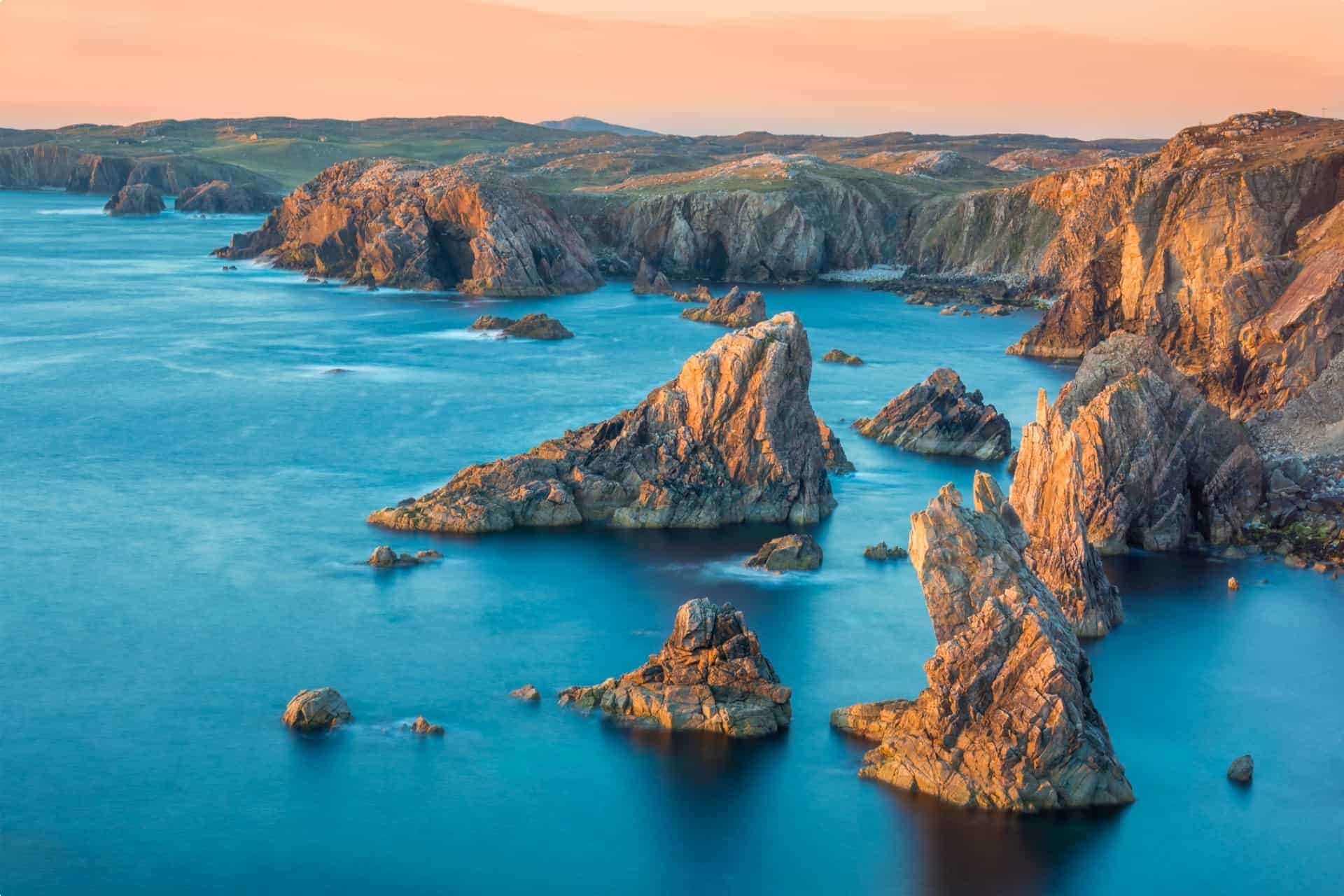
The Coming of Electricity
With the advent of reliable electric lighting, there was no longer a need for fuel burning lamps. Electricity was capable of producing a beam of well over three million candlepower, could be increased or decreased at will, and dispensed almost entirely with the need for the immense storage tanks and winding mechanisms.
It also possessed another vast advantage over the use of oil or paraffin: it could be operated automatically. All of a sudden, the need to have keepers continually on watch disappeared. Now, the keepers merely had to press a switch on the wall, make the occasional check, and leave the light to its own devices.
And so, beginning in the 1960s, the NLB began automating the lights. An average of three lights a year would be adapted, and with them another bunch of keepers would return to civilian life. By March 31, 1998, the final lamp in Scotland, at Fair Isle South lighthouse, was turned off and all four keepers departed the premises. The 200-year-old profession had been fully automated.
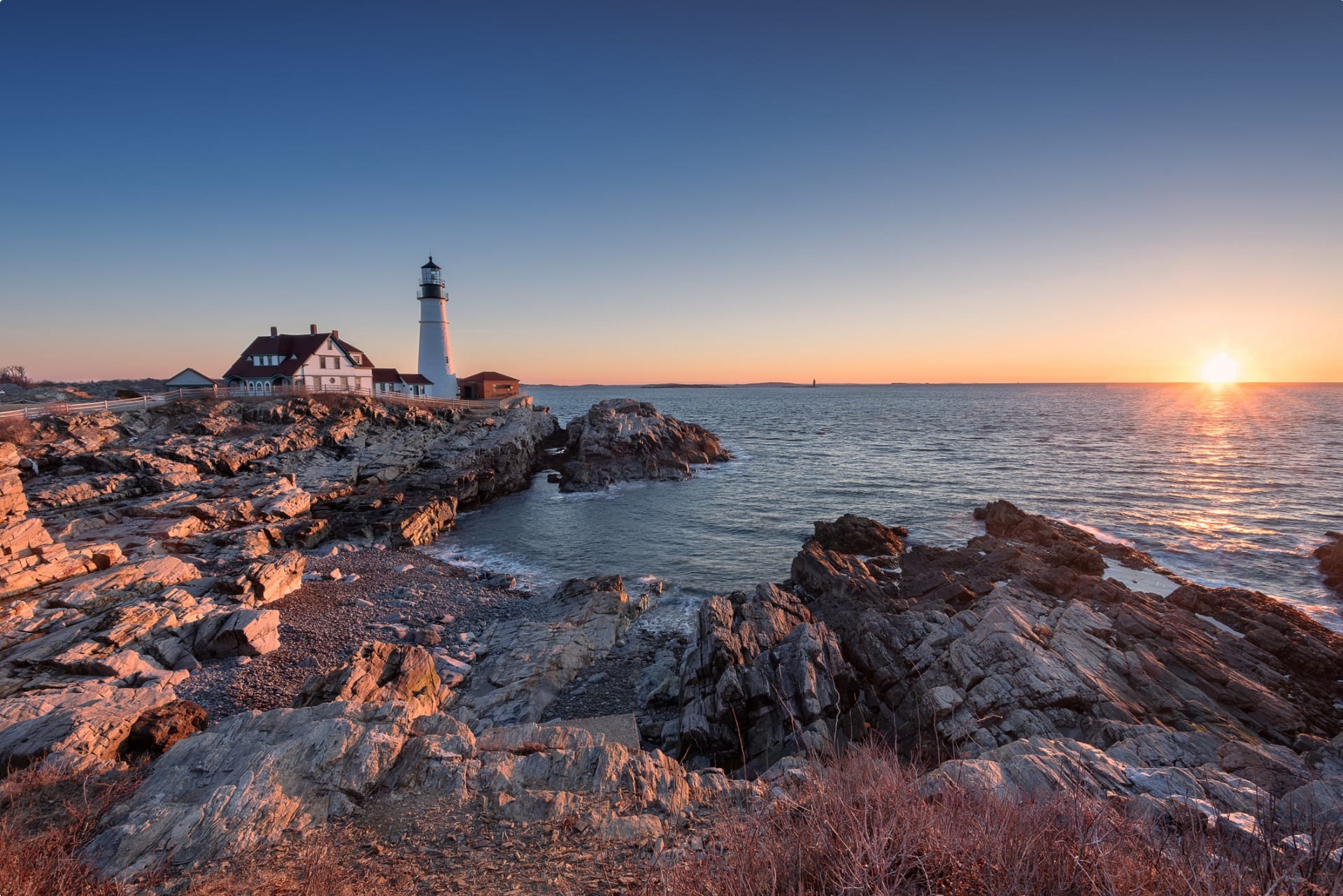
Tour of Scotland’s Lighthouses
Odyssey Traveller visits several of Scotland’s famous lighthouses during our Scotland’s West Coast small group tour.
This twenty six day small group tour of Scotland’s West Coast is for the senior couple or mature solo traveller who wants to really explore the beauty of Scotland’s magnificent landscape, particularly in the Highlands and Islands. Our fully escorted tour takes us from the historic Orkney Islands in the north, all the way down to the Mull of Galloway in the far south of the country. On the way we visit the Outer Hebrides, Skye and the Island of Mull. We drive through atmospheric Glencoe, travel around mysterious Loch Ness, and take the famous rail journey between Fort Willian and Mallaig. There will be time to stop to admire lochs and glens, seals, sea eagles and highland cows, historic castles, and of course lighthouses (including the Cape Wrath lighthouse and Mull of Galloway lighthouse, both designed and built by Robert Stevenson in the late 1820s).

Articles about Scotland published by Odyssey Traveller
The following list of articles published by odyssey Traveller for mature aged and senior travellers to maximise their knowledge and enjoyment of Scotland when visiting:
- Birth of Scotland
- Questions about Scotland
- Peat & Scotland
- Shetland Islands Discovered
- Questions about the Outer Hebrides
- Visiting Scotland
- Scotland & Scotch Whisky
- Visiting Edinburgh places to consider visiting
- Country Spotlight; Scotland
- Nelson Mandela Place; a Glasgow story
- Glasgow’s Architectural heritage
- Stone circles
For all the articles Odyssey Traveller has published for mature aged and senior travellers, click through on this link.
External articles to assist you on your visit to Scotland
Related Tours

26 days
Sep, Apr, May, AugScotland's West Coast small group tour
Visiting Scotland
Explore the West of Scotland, join the gulf stream and visit and spend time with a small group educational tour for senior couples and mature solo travellers visiting with time to explore in depth, Skara Brae, Mull, Iona, Oban and Glasgow and the communities of the Atlantic.
From A$21,935 AUD
View Tour
5 days
Jun, JulEdinburgh City Tour
Visiting Scotland
A guided tour of the capital of Scotland, Edinburgh is a day tour collection with a tour leader and local guides. The old town of Edinburgh including the Royal mile and New town of Edinburgh are a UNSECO world heritage site and are included in our itineraries as well the Palace of Holyroodhouse.
From A$4,795 AUD
View Tour
From A$13,915 AUD
View Tour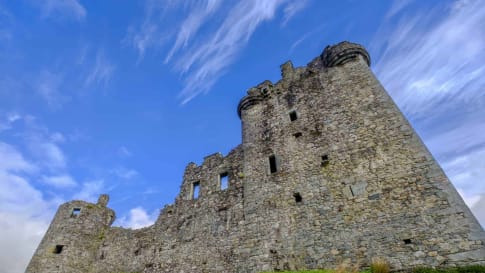
22 days
Jul, Sep, Jun, AugScotland small group tour | Tracing 5,000 years of history
Visiting Scotland
This guided tour of Scotland with a tour leader and local guides includes the isle of Skye, Orkney islands, the Scottish highlands with breathtaking scenery. Edinburgh including the royal mile, Palace of Holyroodhouse, Fort William, Urquhart castle, Stirling castle, loch lomond, Hadrians wall and New Lanark also a UNESCO World heritage site.
From A$15,995 AUD
View Tour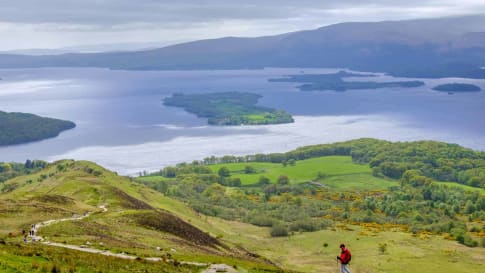
13 days
Jun, Aug, MayScotland's Great Trails Walking Tour
Visiting Scotland
An escorted walking tour of Scotland. This trip is mainly in the Scottish Highlands. Your tour leader guides you to Stirling Castle, Loch Lomond and Craignorms National park with experienced local guides. The tour for mature couples and solo travellers finishes in Edinburgh with time to visit Edinburgh Castle and the Royal mile a UNESCO World heritage site.
From A$11,560 AUD
View Tour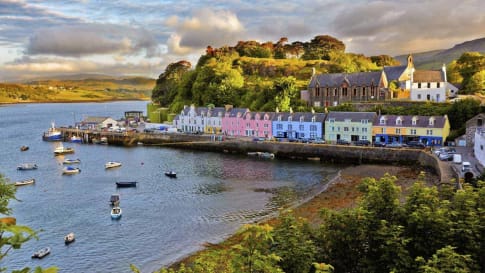
20 days
May, Jul, Aug, SepScottish Islands and Shetland small group tours for seniors
Visiting Scotland
An escorted small group tour for couples and solo travellers of the Scottish isles including the isle of Skye draws on local guides to share their knowledge of the destinations in this unique part of Scotland. UNESCO world heritage site are visited as breathtaking scenery and authentic experiences are shared in a group of like minded people on this guided tour of remote Scotland.
From A$17,525 AUD
View TourRelated Articles
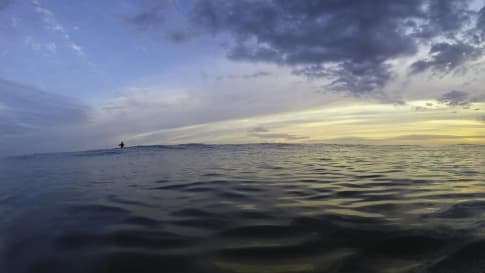
Atlantic Ocean and How it Shaped Ancient Communities In Europe
Article of interest for senior couples and mature solo travellers joining a small group European tour to Faroe Islands, Scottish Isles, Morocco or Portugal. Focus is on the early exploration of the Atlantic.

Harris Tweed - a story
A cloth only woven on the Outer Hebrides of Scotland. Enjoy a small group educational tour for senior couples and mature solo travellers to learn more about this craft and much more on a Scottish isles tour.
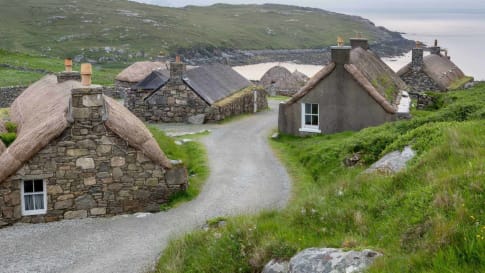
Islands of the Outer Hebrides: The Definitive Guide for Travellers
Scotland's Outer Hebrides are discussed in this article to assist the mature solo and couple in planning to visit Scotland and the British isles on a small group tour.
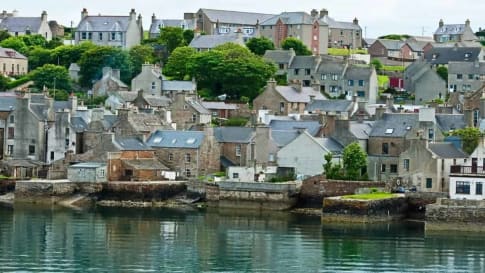
Orkney Islands, Scotland
Explore the Orkney and other isles of Scotland on a small group tour for senior couples or solo travellers interested in Scottish history. Learn about Skara Brae and prehistoric Britain as well as the importance of Peat and Whisky.

Stevenson Family Lighthouse Engineers
Article about the generations of Stevenson's building lighthouses along the islands of Scotland and the Scottish coast.An Antipodean travel company serving World Travellers since 1983 with small group educational tours for senior couples and mature solo travellers.

Touring the beautiful Scottish Islands
Small group tours of the Scottish isles including Orkney, Skye, Iona and Shetland plus others for senior couples and solo travellers.


